The sound of the tracks were calming as my railway car glided effortlessly through central Poland’s breathtaking countryside. A nation with a history of great turbulence, Poland’s flat landscape and proximity in the middle of Europe – where east meets west – made it a convenient gateway for a seemingly endless array of past conquerors. From my train window I could see where Hitler’s Wehrmacht blitzkrieged into the countryside, and later where Stalin’s Red Army returned the favor as his troops marched towards the defeat of Nazi Germany. Countless invaders arrived before the Germans and Russians, including the Tartars, the Teutonic Knights and the Slavic tribe, the Plonians, who stayed and made Poland their home. But today, eating lunch in my luxury train compartment, all I could feel was the serenity of the little farms and villages that dotted the terrain. There’s something about physically watching the miles pass from your train window that allows a perspective that is not offered by plane travel. Also, Europe is a relatively small continent, with its major cities close to one another, making it ideal for passages on well-connected train lines.
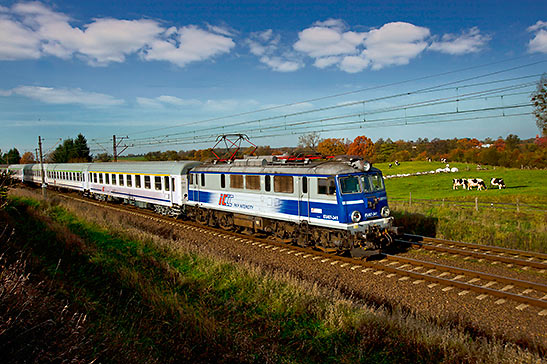
Cutting through the Polish countryside with Eurail. Photograph by B. Banaszalk.
Planning the trip had initially been a daunting task. But after careful research, I found that a Eurail Global Pass offers travel in 28 European countries, giving me the freedom and flexibility to create my own personal journey of discovery. Owned by over 35 railway companies, I opted for a Eurail Select Pass, which featured a Regional and Three Country Pass. That would mean six cities and three countries in twelve-days without any hassles. Plus, it was also easy on the pocketbook. With my Eurail map in hand, I couldn’t wait to experience the destinations on my schedule.
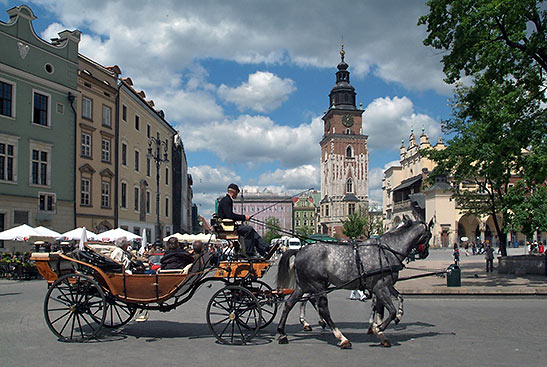
The Old World charm and romance of Kraków. Photo courtesy of Kraków Tourism.
Kraków (Pron: Kraw-KOOF)
It’s almost a cliché to say that Kraków is poised to be the next Prague, but this remarkably well-preserved medieval city serves as a stunning outdoor museum. Kraków rates fifty-five UNESCO World Heritage Listings, which includes the entire historic town center. Kraków was basically left untouched by the Nazis. Although they had mined the city for complete destruction, they couldn’t follow through due to a surprise Red Army invasion. Today, Poland’s former capital is the nation’s number one tourist destination. The city lends itself to a stroll on the Royal Way Walk or a coffee at an outdoor café in the main market square with Wawel Cathedral, the most visited site in Poland, watching over you. Bask in the vibrant ambiance of street merchants, musicians and Krakóvians, commencing in their daily affairs. Poles may seem to be indifferent to tourist, particularly those of us adorned in shorts, flip flops and t-shirts with billboard logos, but don’t be afraid to engage a local in a few words in Polish – broken, in my case – and you’ll usually find a person who is willing to share their knowledge of the city, history and current events.
And what to eat: ‘Bigos’ is a much-loved Polish stew made from sauerkraut, meat and a variety of vegetables; ‘Pierogi,’ half-circular dumplings usually formed from noodle flour dough; and the definitive Polish comfort food, ‘Zurek,’ a fermented soup made with sour rye flour. Also, ‘Steak Tartare’ — having little time for cooking, the Tartars would put desiccated horse meat under their horses’ saddles while riding, in order to soften it prior to eating — and Viennese ‘Wienerschnitzle’— an Austrian breaded, fried veal cutlet — which originated in northern Italy as ‘costoletta alla Milanese.’
Selected Sites Around Kraków
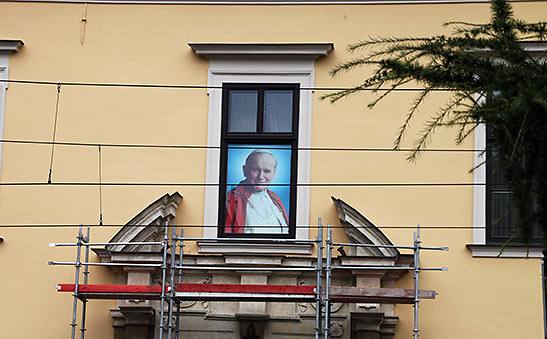
The birthplace of Pope John Paul ll, Kraków’s favorite son. Photograph by Ed Boitano.
Pope John Paul ll (Karol Wojtyla)
Poland is considered the most devoutly Catholic country in Europe, and it cannot be overstated the effect that Pope John Paul II (1920-2005) – Kraków’s most famous native son, born in nearby in Wadowice – had on the Polish people. A supporter of the anti-communist Solidarity – an independent self-governing trade union – his words to the Polish populace: “Do not be afraid,” gave the Poles courage to stand-up up the Soviet Union, which led to Poland’s break from communism and the eventual collapse of the Soviet Union. His birthplace is a short drive from the city center, while the John Paul II Center and Sanctuary in Kraków is the most popular destination for pilgrimages.
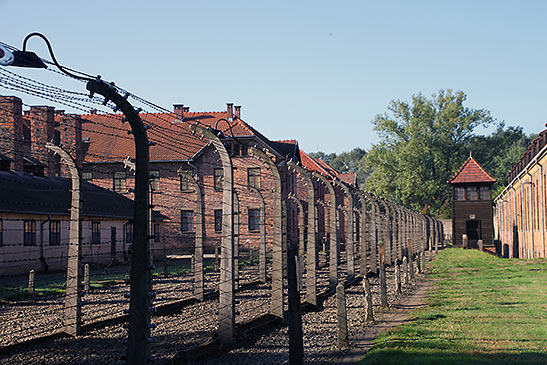
The horrific slave labor camp of Auschwitz evokes an array of deep emotions.
Photograph by Ed Boitano.
Auschwitz – Birkenau
A solemn tour of the Auschwitz slave labor concentration camp, followed by roughly a 10-minute trek to the Birkenau extermination camp, is a deeply moving personal experience that requires no words. Over 1.5 million died, that included 1.1 million Europeans of Jewish ancestry, Gypsies, Catholic priests, the mentally and physical handicapped, political dissenters and homosexuals at Auschwitz–Birkenau as part of Hitler’s demented plan to build a 1,000-year-long Aryan race.
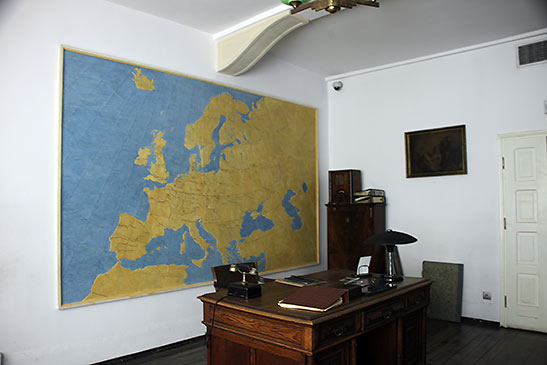
Oskar Schindler’s office is considered the most popular site at Schindler’s Factory Museum. Photograph by Ed Boitano.
Schindler’s Factory Museum
The industrialist and Nazi Party member, Oskar Schindler became world-famous due to the book, Schindler’s Ark and the later Steve Speilberg film, Schindler’s List. He formed a factory, making pots and pans, using members of Krakow’s Jewish community as slave laborers. As the war progressed, he discovered that his workers would be transferred to a concentration camp, where many would be rubber stamped for extermination. The factory shows Schindler’s office where it is believed an assistant devised a list that saved the lives of 1,200 Jewish prisoners, insisting they were essential to the success of his factory. The workers were then instructed to make war armaments. Mysteriously, many turned out to be defective. The factory has been expanded to showcase a museum that conveys the horrific period of Nazi occupation. Schindler is virtually worshipped in many western nations; but ask a Pole if he was a hero and you might be surprised to hear that the deceased man is still wanted for war crimes in the Poland of today.
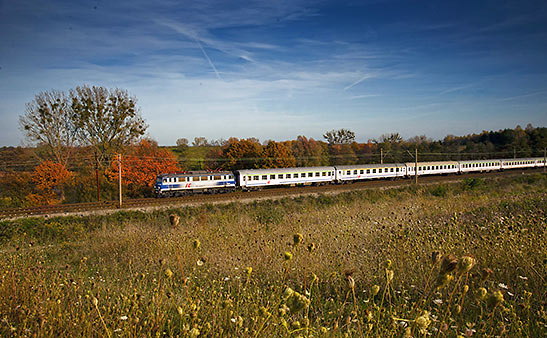
Kraków to Wroclaw: Time – 3 hours & 10 minutes. Photograph by B. Banaszak.
Wroclaw (Pron: Vra-SWOOF)
Nestled on the River Oder in the Silesian Lowlands, over 80 percent of Wroclaw was destroyed during the Second World War, but this time by Allied bombers due to the fact that Wroclaw was then part of Germany, named Breslau. After the war, the city was given to Poland where the complete replacement of the city’s population gave Wroclaw potential for newcomers to reinvent the city. Today, it is a vibrant, young city with over 122,000 energy-driven students and a forward-thinking city administration. Carefully rebuilt, Wroclaw was the European Capital of Culture in 2016.
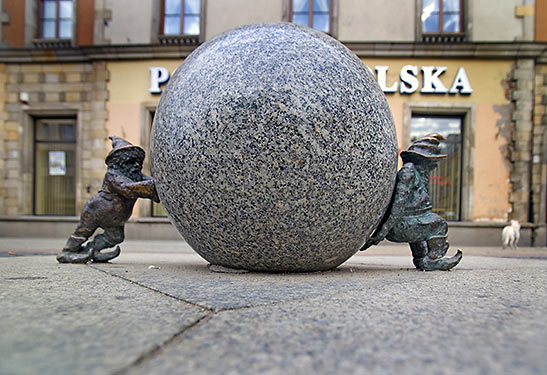
A fun way to explore the city is to grab a “dwarf map” which combines sight-seeing with the tracking of over 300 dwarf statues, strategically placed throughout Wroclaw. Photo courtesy of Wroclaw Tourism.
Wroclaw is a city that lends itself to a leisurely walk through the historic city center where you’ll find numerous restaurants, beer gardens and clubs. I was impressed that when ordering a beer during Happy Hour you’re also giving a free sandwich; an example of the progressive nature of Wroclawians, aware that alcohol on an empty stomach should be avoided. As previously noted, Wroclaw’s nationality dramatically changed many times throughout the ages, belonging to Poland and Bohemia, then Hungary, Austria, Prussia, Germany and, in the end, back to Poland. The city’s name in other languages, include Hungarian: Boroszló, Czech: Vratislav, German: Breslau, Hebrew: ורוצלב (Vrotsláv) and Yiddish: Bresloi. Don’t feel bad if you struggle in pronouncing the city’s name; the locals are well used to it. As you wander through this ever-changing city you will see architectural styles influenced by the Bohemians, Austrians and Prussians.
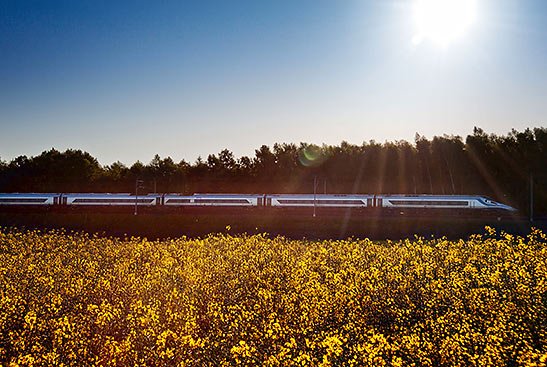
Wroclaw to Warsaw: Time – 3 hours & 36 minutes. Photograph by B. Banaszak
Warsaw (Pron: Var-SHAW-va)
While Kraków offers Old World charm and romance, Warsaw is the electrifying capital city of Poland with a population of 1.7 million. The Polish equivalent of a hybrid New York and Washington DC; it is the place where things happen. The home of the courageous Warsaw Uprising – see film director, Andrzej Wajda’s 1957 masterpiece, ‘Kanal,’ where his images focus on Polish resistance fighters crawling through Warsaw’s sewers to escape the German encirclement – and the Warsaw Ghetto Uprising; heart-wrenching suicidal battles where Poles of Jewish ancestry took their final stand, engaging the Wehrmacht in combat, based on the decision that they would die on their own terms, not on the German’s. Later, Hitler brutally punished the citizenry by reducing the city to rubble, destroying 85 percent of Warsaw and killing approximately two out of every three Warsavians. The Soviet Red Army watched the destruction from a distant hill, not bothering to fire a single shot in support of the Poles. They knew that their Nazi enemy was doing part of their work. Shortly later, they would ease into Warsaw as both a liberator and conqueror, aware that Poland itself would soon be a Russian buffer state. For more, stream the 1958 film, ‘Ashes and Diamonds,’ a cornerstone in Wajda’s body of work. After the war and the eventual demise of the Soviet Union, the historic city center was painstakingly rebuilt, brick by brick, to its former glory. Today, Warsaw enjoys a plethora of seemingly endless museums and heartfelt monuments, revitalized wide boulevards and towering skyscrapers.
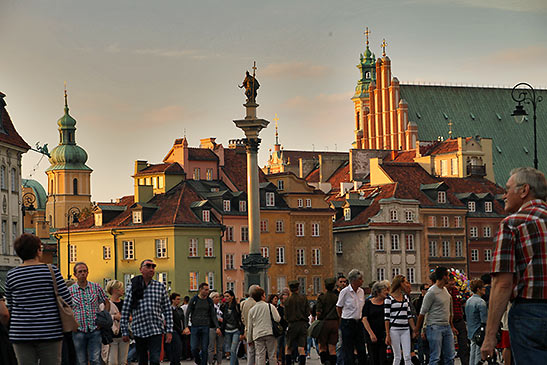
Warsaw’s historic city center was painstakingly rebuilt after the Second World War to its former glory. Photograph by Ed Boitano.
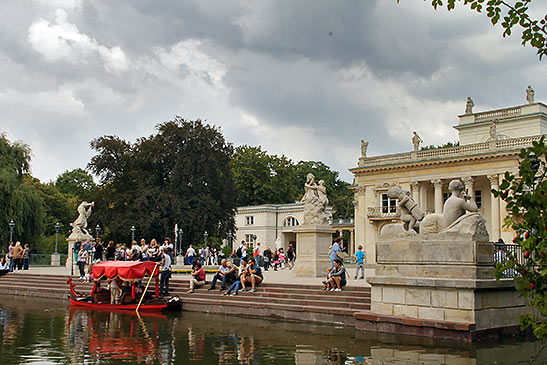
Łazienki Park, often rendered “Royal Baths Park,” is the largest park in Warsaw.
Photograph by Ed Boitano.
On the top of your list should be a trip to the museum, 1,000 Year History of Polish Jews, and an al fresco Frédéric Chopin concert at Łazienki Park – one of Warsaw’s favorite sons. The park-and-palace complex lies in Warsaw’s central district on the “Royal Route,” linking the Royal Castle with Wilanów Palace.
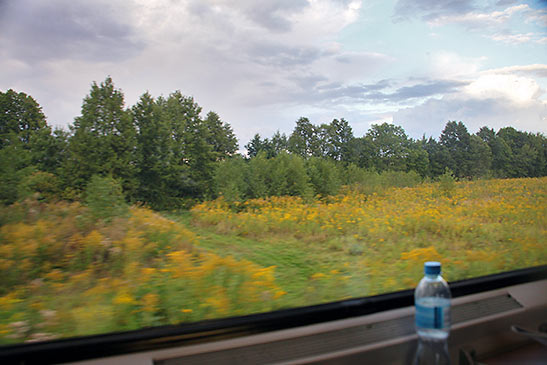
Warsaw to Berlin – 5 hours & 37 minutes. Photograph by Ed Boitano.
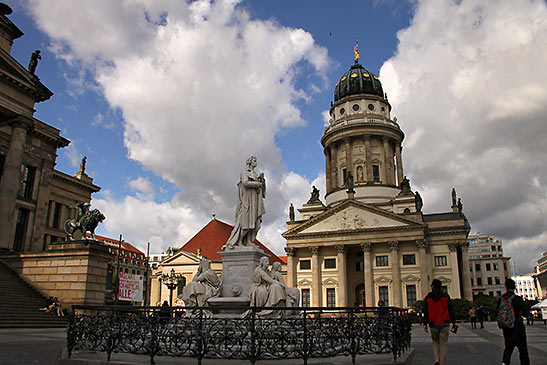
Berlin’s Gendarmenarket is often considered the most beautiful square in Germany.
Photograph by Ed Boitano.
Berlin
It is hard to believe that it has been over well-over 30-years since the fall of the Berlin Wall. Known for its remarkable transformations, this enthralling city on the “Prussian Plains” continues to redefine itself as it marches into 2022. For lovers of history, no city has had a greater impact on the 20th Century than Berlin: the centerpiece of two world wars and the epicenter of the Cold War, everything seemed to happen in Berlin. After the Berlin Wall fell, artists poured into the former East Berlin, while the West remained an affluent showplace for the world to see. Today, there still seems to be somewhat of a cultural divide between the cutting edge, artist-driven East and the ultra-hip, modern West, but this dichotomy is one of the reasons that the city is so alive. Quite simply, it is my favorite city on the globe.
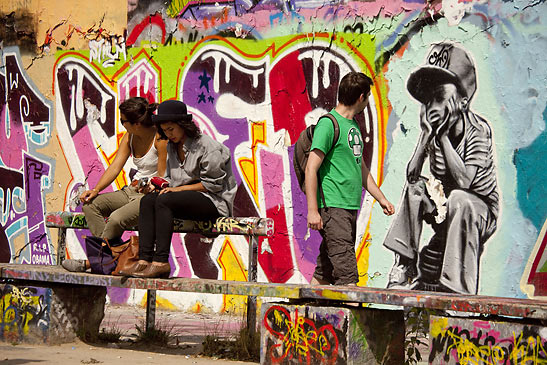
Photo courtesy of Berlin Tourism.
Some of my favorite attractions include a visit to the East Side Gallery, which is the longest remaining stretch of the Berlin Wall, decorated by 118 artists from 21 countries. Cycling the Trail of the Wall is a guided bicycle tour along the path of the Wall with Berlin on Bikes. The Palace of Tears, a museum situated at a former border crossing station, which helps visitors understand the border experience and the steps toward reunification. The Wall Museum at Checkpoint Charlie offers an insight into the Cold War, construction of the Wall, and the fight for human rights. The Black Box, also located at Checkpoint Charlie, touches on the history of the famous former border crossing point during the Cold War. This is the crossing where U.S. and Soviet tanks faced off for 16 hours in 1961, almost creating a third world war. The STASI Museum is situated on the former grounds of the headquarters of the communist German Democratic Republic. The Stasi was the GDR’s infamous secret police, modeled after the Soviet’s own KGB, itself modeled on the Nazi’s Gestapo. The terrifying former central complex of the Ministry of State Security showcases original offices, as well as the diverse aspects of the political system and the opposition against it. The GDR Museum offers an interactive look of daily life in the former communist East before reunification. Visitors can experience everything from the bugging equipment of the Stasi; displays of the sluggish two-cylinder Trabant car, the GDR’s answer to West Germany’s Volkswagen; and an attempt to emulate denims, adolescents’ most sought after product. Museum Island, the original settlement of Berlin on the River Spree, consists of five epic museums which collectively are a UNESCO World Heritage Site. The museums feature everything from classical antiquities to collections belonging to King Frederick William IV of Prussia. What can’t be missed is Museum Island’s Pergamon Museum, which hosts stunning reconstructions of massive archaeological structures. It is the most visited museum in Germany.
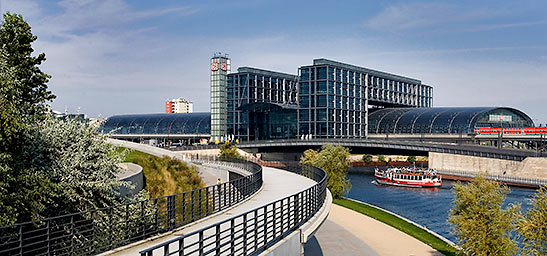
Berlin to Hamburg – 1 hour & 37 minutes. Photo courtesy of Berlin Tourism.
Hamburg
Are the residents of Hamburg referred to as ‘Hamburgers,’ ‘Hamburgites’ or ‘Hamburgtonians’? Even the Hamburg PR had different answer, but it has been confirmed that this booming, northern port town is the actual birthplace of the hamburger (circa 1861), which was a popular snack for sailors and dock workers’ Christened, ‘rundstück warm,’ the proto-type burger consisted of day-old pork topped with either beet root, pickles, tomato slices, sandwiched between two round Kaiser rolls and doused with pork gravy. Sailors returning to Hamburg’s port would request what they referred to as a ‘hamburger.’ As the Hamburg gastronomic invention went out to the world, it returned back to the city, similar to a meatloaf. Many U.S. establishments lay claim to its invention, but Hamburg is the place.
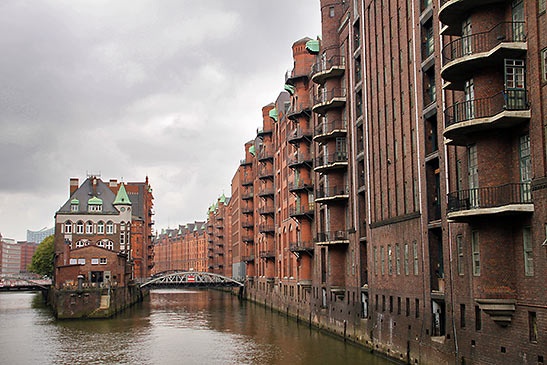
Hamburg has more canals than Amsterdam and Venice combined.
Photograph by Ed Boitano.
As Germany’s second largest city, Hamburg is endowed with hundreds of picture-perfect canals that serve as a gateway to both the North and Baltic Seas. Like Berlin, Hamburg is blessed with expansive green areas and striking architecture, many of which is new. During WW ll, the city had suffered from strategic Allied bombings, which created horrific firestorms, killing an estimated 37,000 civilians and wounding 180,000 more, virtually destroying most of the city. Hamburg was rebuilt and regained its position as an affluent port city that is both creative and open to innovation. It serves as an important transportation hub, with a strong media industry and financial and industrial center.
For Beatle fans, a stroll through the Reeperbahn, once a seedy sailor’s haunt and red-light district, showcases a number of venues where the mop-tops played off and on for two years. This is where they perfected their ‘beat-sound’ before they became world-famous; and, of course, a fame still in the limelight today with the ‘Get Back’ documentary. Highly recommended is Stefanie Hempel’s Beatle tour. A walking encyclopedia on all things the Beatles, Ms. Hempel shares her insight about the lads which will dazzle even the most well-versed fan of the lads. Upon the Beatles’ arrival, they sported greased-up, slicked-back haircuts, but after meeting German photographer, Astrid Kirchherr, they transition to their world-famous coiffure, in which Kirchherr used Jean Cocteau’s 1950 film ‘Orpheus’ as her main inspiration.
Another important point of interest is Miniatur Wunderland, the largest model railway exhibition in the world. The world-famous model train and miniature exhibition is Hamburg’s number one tourist attraction, a must-to-be-seen to be believed.

Hamburg to Amsterdam – 5 hours & 23 minutes.
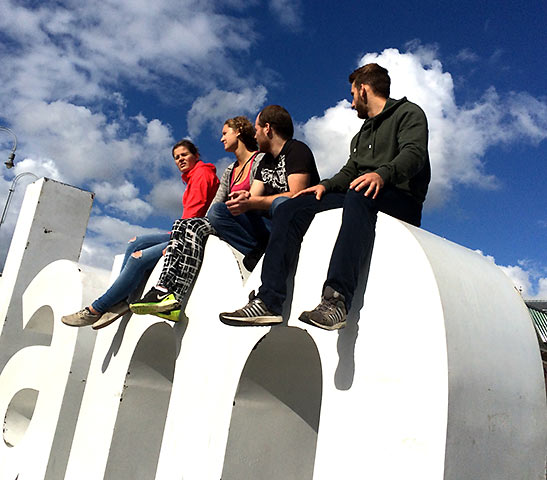
Photograph by Matthew Wexler.
Amsterdam
Less than a full day is never enough time spent in this dynamic city of pristine canals, world-famous museums and remarkably preserved merchant and shipping magnate homes. Akin to a 24-hour party town, everyone in seemed to be out and about, which included plenty of tourists like me. Dinner was at Café Hoppe (circa 1670), a wildly popular Brown Café’ – no, not one of those – but a historic venue defined by its wooden interior, blemished by years of tobacco smoke. A quick stroll through Amsterdam’s Red Light District revealed that the once quiet district with women in the windows had been transformed into a rowdy hot spot, popular for British bachelor parties. My evening ended with a tranquil evening canal cruise with the lights and stars of Amsterdam above me. My journey back home began with stepping over a drunken bicyclist who had just collapsed on the ground next to my 6 a.m. waiting taxi.
WHEN YOU GO
For further information, www.eurail.com






















